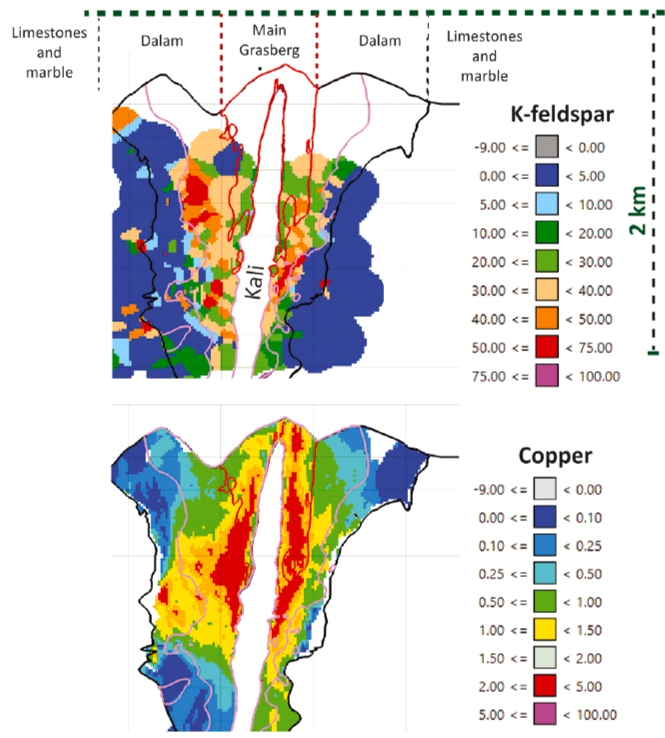This post is a review and summary of an excellent paper: Bradley Cave, Richard Lilly, Alexander Simpson, Lucy McGee, A revised model for the George Fisher and Hilton Zn-Pb-Ag deposits, NW Queensland: Insights from the geology, age and alteration of the local dolerite dykes, Ore Geology Reviews 154 (2023) 105311. https://doi.org/10.1016/j.oregeorev.2023.105311
SUMMARY
- The George Fisher and Hilton Zn-Pb-Ag deposits are located approximately 20 km north of Mount Isa.
- A dolerite dyke has been discovered at the George Fisher Zn-Pb-Ag deposit and the dolerite dyke have a large spike in TiO2 and V values.
- In drill core, the dolerite dykes occur as a light grey to grey-brown coloured rock that is commonly overprinted along its margins by Zn-Pb-Ag mineralisation.
- In-situ U-Pb geochronology performed on igneous apatite produce a lower intercept age of 1611 +/- 21 Ma and 1619 +/- 22 Ma for the dolerite dykes at the George Fisher and Hilton deposits, respectively.
- The dolerite dykes have experienced multiple stages of post-emplacement hydrothermal alteration/veining.
- Monazite from a quartz-albite-K-feldspar vein in the Hilton dyke produces a lower intercept age of 1513 +/- 16 Ma.
- To assess the timing of alteration in the adjacent George Fisher Zn-Pb-Ag deposit, in-situ Lu-Hf geochronology was performed on pre-mineralisation calcite from a section of stratabound Zn-Pb-Ag mineralisation, and a paragenetically late cross-cutting sphalerite-calcite vein.
- Calcite from the pre-mineralization alteration assemblage produces a Lu-Hf age of 1501 +/- 32 Ma.
- Calcite from a cross-cutting vein that post-dates Zn-Pb-Ag deposition produced a Lu-Hf age of 1289 +/- 26 Ma. The 1289 Ma age is associated with late faulting and movement along the adjacent Mount Isa Fault (B. Cave pers comms 2023).
- The paragenetic equivalents of the hydrothermal alteration/veining in the dolerite dykes are found in the adjacent Zn-Pb-Ag orebodies.
- The maximum age of alteration within the dolerite dykes is constrained by the monazite age of 1513 +/- 16 Ma, and the maximum age of stratabound Zn-Pb-Ag mineralisation is constrained by the Lu-Hf age of 1501 +/- 32 Ma.
- The dolerite dykes intruded during the early Isan Orogeny at ca. 1620 Ma, and experienced subsequent hydrothermal alteration during D3 of the Isan Orogeny coeval with Zn-Pb-Ag mineralization. Post mineralization faulting occurred during D2 of the Isan Orogeny, at ca. 1290 Ma.





























